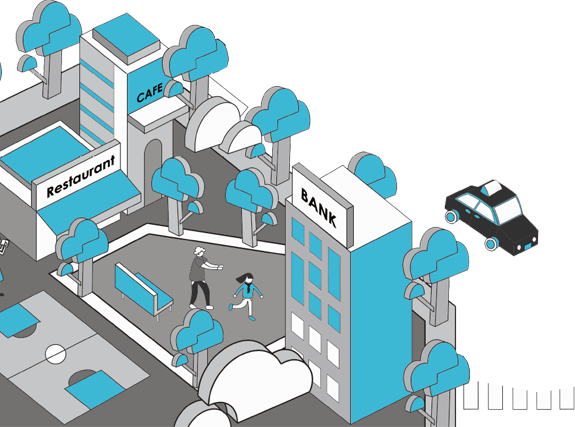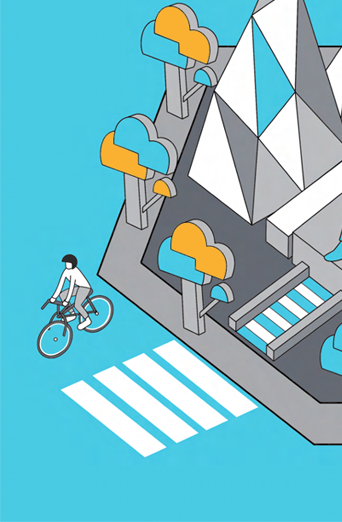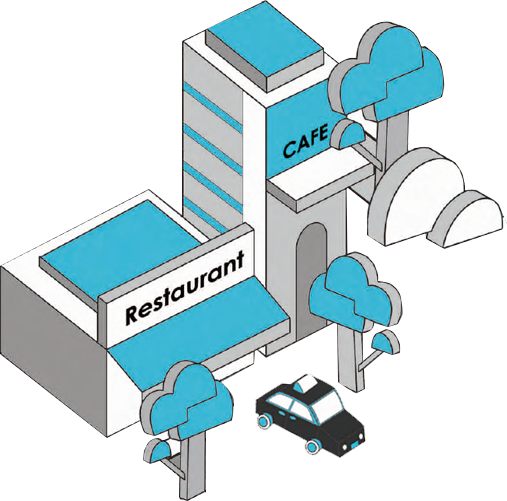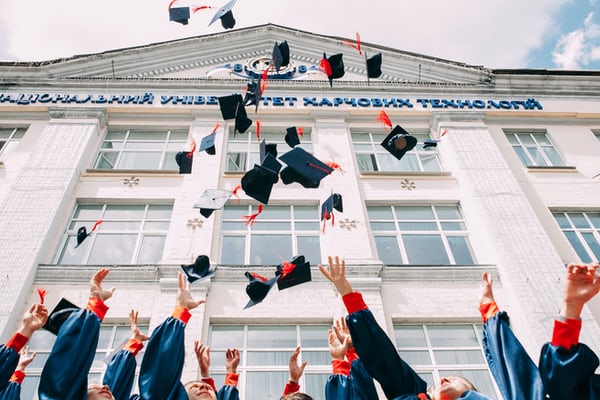As more young people are moving to Shenzhen for work, there has been a rapid development of the nascent childcare industry. One of the Shenzhen government' s current goals is to become more of a "child friendly city.M It has made many efforts in this regard, from piloting a Japan-inspired neighborhood-watch-like program in Luohu District, under which local shops are enlisted as volunteer safe zones to protect children from abuse, to building children' s parks and public nursing rooms. For example, in Fuyong Subdistrict, Bao1 an District, the local government solicited ideas from children for the new Fuwei Community Children' s Park, which is a part of a campaign to build five small children' s parks in urban villages as well as a huge sports park in the subdistrict this year. The aim of building parks like these across the city is to provide safe outdoor areas for kids to play, as well as venues for public activities regarding family education, health and psychological consultation, and the promotion of reading and the rule of law.
One of the larger campaigns over the last couple years has been a crackdown on unlicensed childcare centers. The industry had previously been little more than unregulated private apartments where kids could hang out after school. The government has also increased the requirements for aftercare and noon-care at schools to ensure kids always have a place to go.
Most international schools offer half-day and full-day nursery services. There are also about 250 nursery centers of all sizes in the city, including both Chinese-language and bilingual facilities. They provide services for children between three months and three years old, and cost between 7,000 and 12.000RMB per month. Most centers are open Monday to Friday and closed on the weekends. In addition to providing three meals and nap times for children, they also arrange outdoor activities and teach good habit development and early childhood lessons in areas like handmade crafts, music, games and language.
The top ranked centers include MoreCare and BeneBaby.
In addition to childcare, there also are centers nurturing other aspects of childhood learning and growth, and entertainment and leisure venues, such as swimming pools and children's parks.
There are more than 20,000 parent-child activity centers, institutions, clubs, kids' shops and childcare centers in Shenzhen. With many kinds of programs and activities, such as nursery school, early education, photography, swimming and other physical training, artistic training, language development, themed amusement parks, STEM and STEAM centers, and maternity and childcare stores, the industry can meet almost all of the parenting and educational needs of new parents. Most services charge on a package basis, for instance a package of 30 visits for a certain up-front price.
Da Zhong Dian Ping is a useful app for searching for these kinds of shops and services. You can look up the type of service and filter the search by location, and the app provides the contact information along with pictures and customer reviews.
Some of the top ranked STEM/STEAM centers are Tong Chung Tong Mei, Little Elephant Creative Center and Korei.
The amusement centers for kids include play pens, trampolines, sports venues, theme parks, themed party services, farm activity spaces, reading rooms, sports adventures, zoos and botanical gardens, science museums and more. Most museums are free, while admission to most parks costs 100-200RMB. A few parks and entertainment venues cost more than 300RMB per visit, but purchasing an annual or VIP membership can reduce the per-session price to within 100RMB.
Some of the top ranked amusement centers are iBaby and Dream Party.
There are two types of swimming centers for kids. The first is where children can swim in a special baby bath, which normally costs 50-80RMB per session. This usually includes a bath and a massage after the swim. The other kind allows parents to swim with the kid and costs significantly more, at around 300-600RMB per session. Both centers employ professional staff to guide the baby and provide first-aid rescue in case of an emergency.
One of the top ranked swimming center brands is called Starfish.
As far as shopping for kids, there are many baby and kid shops in the major shopping malls in most neighborhoods. The clothes for babies and kids generally cost between 50 and 300RMB, and prices vary based on different styles and seasons. Shopping online is generally cheaper, where you can find summer clothing for less than 50RMB, and winter clothing costing between 80-150RMB.
FormulaPeople in the big cities tend to buy milk formula that is imported from countries like New Zealand, Holland, Ireland, Germany and Denmark, because it is considered to be of better quality. The top brands are Aptamil, Friso, Biostime, Mead Johnson, Wyeth Ultima, A2 platinum, Similac, Nutrilon and Nestle. A normal-sized can (around 800ml-900ml) costs between 220 and 420RMB.
Diapers
Some of the main diaper brands, both domestic and imported, range in price from 1.4-5.9RMB per unit, for instance Lelch, Pampers, Dodie, Miffy, Merries and Goon Premium.
If you want to ensure you are buying authentic imported formula and diapers, you can also go to Hong Kong, but you can only bring two cans of formula back each time you cross the border. Buying them at a shopping center is also reliable but a bit more expensive. If you buy from online platforms like JD.com or Taobao, you will normally receive them either the next day, or after several days, but be sure to order them from the top shops or famous brand-name shops, like Sunning, to ensure they are legitimate products.






